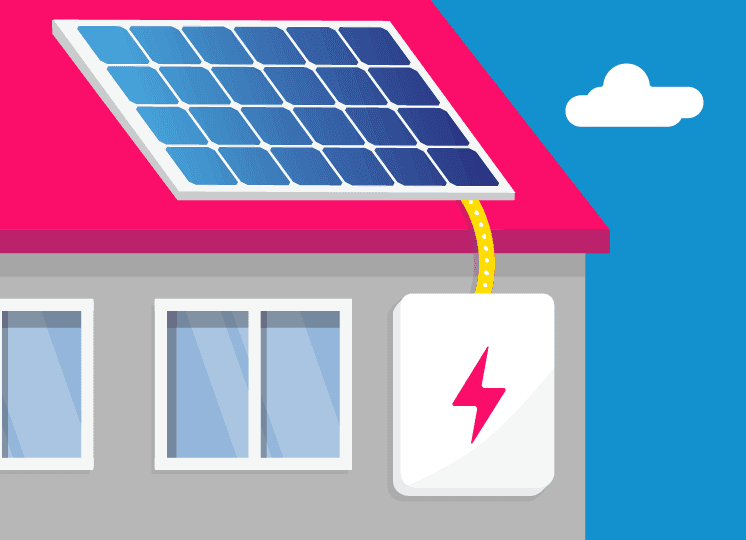Solar technology
Cleaner Energy
4 min read
February 5, 2020
Thinking about getting solar but not sure where to start? Already have solar and wondering if getting a battery system is the best way to go? Find out if these solar technology solutions are for you.
Solar installation is still on the rise, with more than 2 million households now having solar installed across Australia (Clean Energy Council).
In 2018, small scale solar made up 19.6% of Australia’s clean energy generation. Overall this made up 4.2% of the total electricity generated that year (Clean Energy Council).
There are lots of factors to consider when choosing solar technology solutions for your home or business. So we did a quick breakdown of information to help you choose or decide if these solar technology solutions are right for you.

Solar panels
Solar power systems derive energy from the sun. Panels on your roof help reduce carbon emissions and bring down our collective dependence on fossil fuels. By installing solar, you’re not only reducing your carbon footprint, but also doing your bit to increase renewable energy generation when you export energy from the panels to the grid.
You will meet some of your energy needs with the electricity your solar power system has generated. This should mean you will pay less for the power you use. How much you save will be dependent on the size of your solar system and your electricity usage.
Not only can you reduce what you pay for your electricity, but you can also get paid for any surplus power you generate by supplying it to the grid. This is called a ‘feed-in-tariff’.
How does solar work?
Photons from the sun hit your solar panels.
The light, not the heat from the sun is what generates power – so a sunny winter’s day can be just as good as some summer sun.
DC to AC Energy
Your inverter takes the DC energy your panels creates, and converts it into AC energy for your home.
Time to use
Use the energy you need in your home. Hint: it’s generally better to use what you generate, so do the washing while the sun shines.
Excess Solar
Any excess power you don’t use gets exported to the grid. The excess solar is registered on your bill as a credit, called a Feed-in Tariff.

Are batteries readily available, or a thing of the future?
Are batteries readily available, or a thing of the future?
The combination of rooftop solar systems and home battery systems can be an effective way to save on your energy bills, and can offer another level of power independence. Feed-in Tariffs aren’t what they used to be, and you are usually much better off using the energy you generate, rather than exporting it to the grid. A home battery system is a great way to ensure you are using more of what you generate. Plus, with a home battery system, you can be part of things like Virtual Power Plant programs. With power stored away, batteries are available as a back-up in the event of severe weather conditions that may disrupt the grid.
How to decide if you should get a battery
Home battery systems are a great way to help save money on power bills by using more of the energy you generate yourself. You’ll also be more energy independent, and you’ll have a source of backup power during emergencies.
Batteries are only effective if you can generate enough power for storage. If you are using all of the power you generate day-to-day or relying on the grid for additional power, it may not be worth the additional cost.
The cost of home batteries is on the decline, but they are still costly. First and foremost, you should weigh up the cost of a battery against your generation and usage before you make a decision.

Other solar technologies
Innovation within the energy industry is booming. With solar and batteries becoming more prevalent, tech companies are releasing more products that can support existing technology or change the way they are used altogether.
Monitoring platforms
Customers are investing in monitoring platforms so they can track their energy usage. The most common types of monitoring devices use sensors that are clip around certain cables inside the switchboard. If a customer has solar, sensors will measure, import, export and PV Generation.
The data is transmitted to a central hub using the customers Wi-Fi network and displayed in a user portal. Examples of companies that offer energy monitoring platforms are:
Bidgely
Solar Analytics
Efergy
Wattwatchers

Solar with Powershop
Powershop solar energy customers enjoy:
a smartphone app and online usage tools that can help you gain better insights into your electricity usage;
solar feed-in tariffs greater than the government recommended amounts; and
for those with smart meters, access to a heat map of your solar output through your Powershop online account, so you can know more about your solar energy system’s performance.